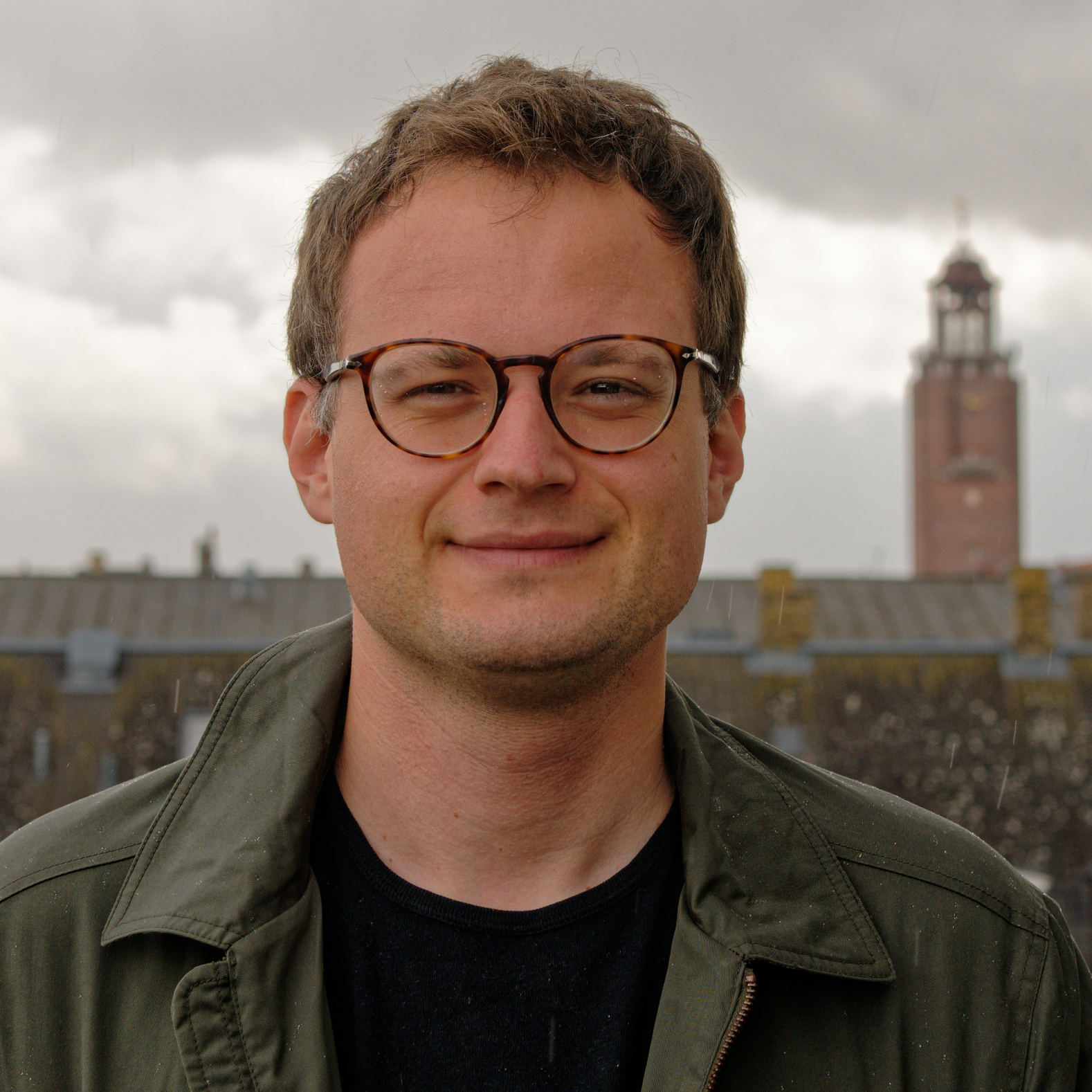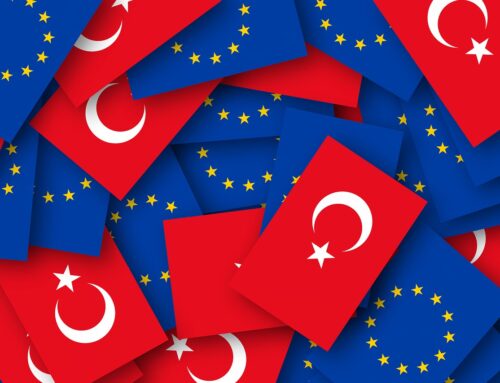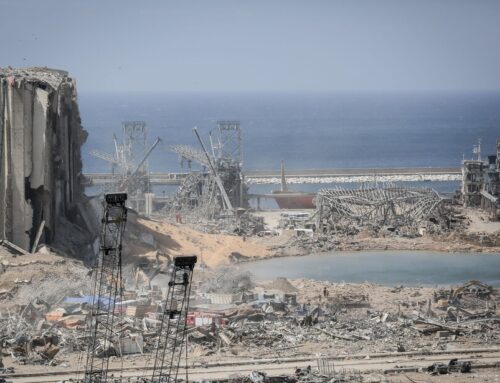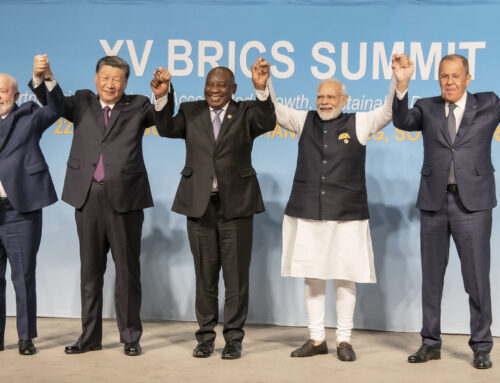Panorama_siekierkowski
Autor foto: Domena publiczna
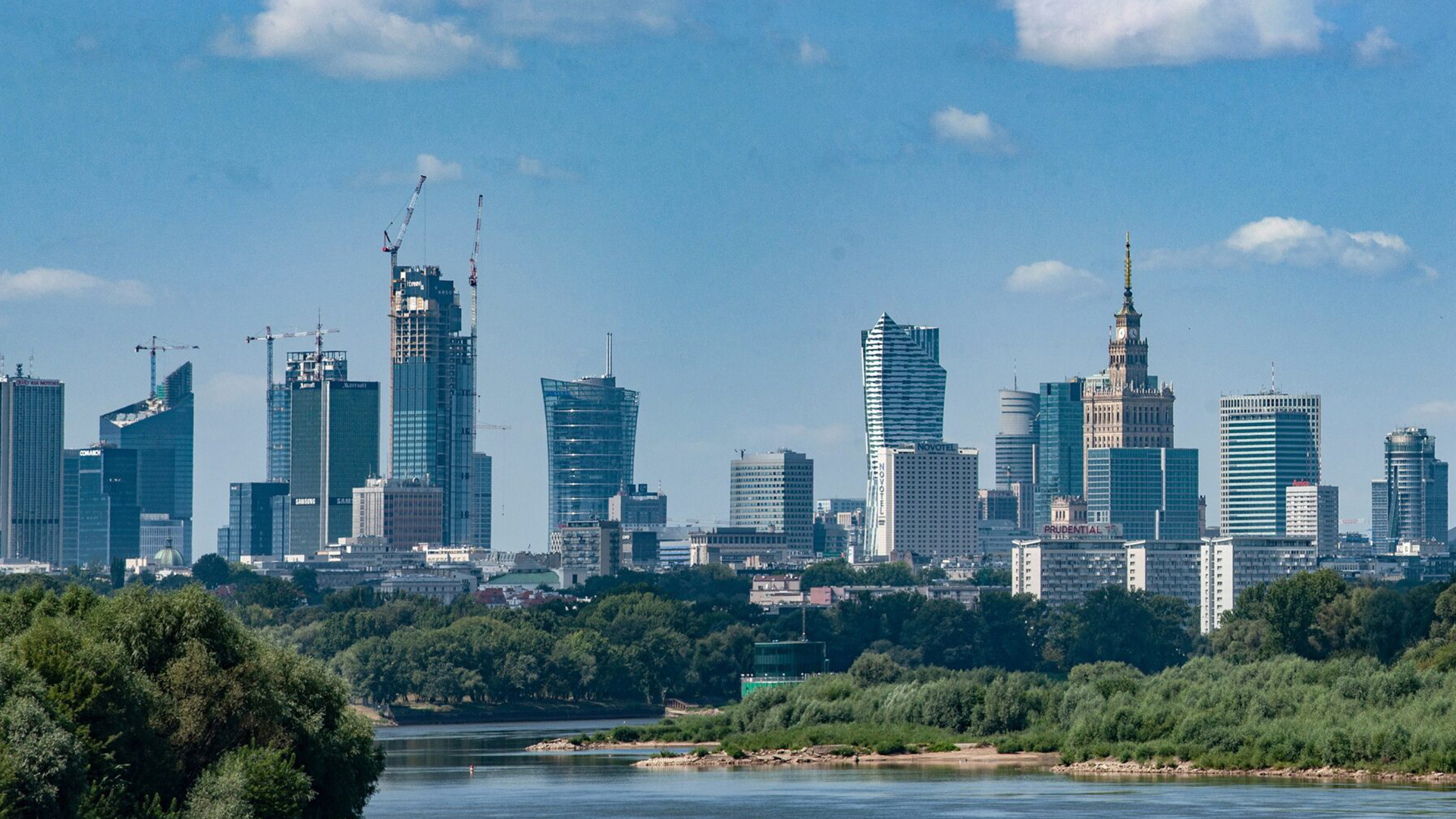
Poland and the advocacy for a wider Central and Eastern Europe
28 lutego, 2023
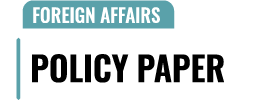

Panorama_siekierkowski
Autor foto: Domena publiczna
Poland and the advocacy for a wider Central and Eastern Europe
Autor: Miłosz J. Cordes
Opublikowano: 28 lutego, 2023
Pulaski Policy Paper no 11, February 28, 2023
The Russian invasion of Ukraine has brought an unprecedented chance to end the existence of harmful stereotype of Central and Eastern Europe as a region where the Kremlin has special interests. It has cost a lot of political efforts to bring Czechia, Poland, or the Baltic states out of this equation and join the Western institutional framework. Now there is enough momentum for doing the same with Ukraine and, perhaps, Moldova. Although it will require a lot of efforts related to fighting corruption, strengthening rule of law, and bringing foreign investments, a positive outcome is plausible. Poland’s experience and close relations with Ukraine can largely contribute to achieving this goal for the benefit of the whole region.
Historical misperceptions
Historically speaking, the objectivity of Central and Eastern European nations has been a rather problematic topic in the eyes of Western decisionmakers, strategists and historians. When the Polish-Lithuanian Commonwealth disappeared from the political map of Europe, the vast spaces between the Oder and Dnieper rivers were filled with ambitious and aggressive empires: Austria (later Austria-Hungary), Prussia (later Germany), and Russia. It was in the best interest of especially the latter two to create a conviction that nations living in that area might have different ethnic or religious background, but their political allegiance was closely tied with Berlin, Vienna/Budapest, and St. Petersburg.
Because of that, far not everybody greeted the emergence of independent nation-states after the First World War. Similarly, some considered the decisions taken after 1945 to be the coming back to the status quo ante. True, the Soviet Union, often still referred to as Russia, extended its control over an unprecedently large stripe of land in Europe, but its dominance was not very much different from what had been the case after the Congress of Vienna of 1814-1815. Central and Eastern Europe lost its subjectivity in international relations again for more than a hundred years, but even after the First World War the myth of Poland being a Saisonstaat was widespread and harmful to the whole region.
The changes brought about in 1989 have been presented as a spectacular victory of freedom and democracy over tyranny and authoritarianism. Yet initially the Western bloc viewed the avalanche of changes triggered by the Round Table talks in Poland with growing concern. Cold War confrontation was dangerous, but it was a danger that everybody was familiar with. Many feared that an uncontrolled transition of power, ethnic grievances and the presence of Soviet troops might trigger a wave of calamitous events in the region. Nobody wanted that on a large scale.
It took many years and efforts for political elites in Warsaw, Prague, or Tallinn to debunk the most unfortunate myths about CEE. It was perhaps even more challenging to convince their Western counterparts that democratisation of the region should result in its integration with such institutions as NATO and the European Union. The process was largely finished only in 2007 when Bulgaria and Romania joined the EU, and most CEE countries became parts of the Schengen Zone. Even later, however, problems with the rule of law or disagreements about EU and security policies made many think that Central and Eastern European nations were not exactly at the core of the West.
No coming back to the post-1991 limbo
Such thinking was almost obvious when it came to most post-Soviet countries. Specifically, EU aspirations expressed by Georgia, Moldova and Ukraine evoked consternation and scepticism. Even the 2008 and 2014 events did not change this attitude. As much as Georgia and the South Caucasus might seem distant geographically to many EU citizens, Ukraine is their direct neighbour, sharing a border with four EU Member States: Romania, Hungary, Slovakia, and Poland. In this case, there is no justification for arguing that Ukraine’s security does not have a direct impact on rest of the continent. Alas, this logic only started gaining the upper hand after February 24th, 2022.
Today, more than 30 years after the dissolution of the Soviet Union and almost 35 years after the beginning of democratic transition of Poland and other communist-ruled countries in the region, it is time for Central and Eastern Europe to emerge as a more cohesive and coherent geopolitical entity. It should not be viewed as an interzone between the politically and economically dominating West and Russia, but as an equally important part of the Western institutional framework and the only area where spreading the Western values is possible and can bring tangible, long-lasting results.
When Poland started its politico-economic transition, its HDI and GDP per capita were slightly lower than (still Soviet) Ukraine’s.[1] It does not mean that Ukraine was a wealthy country, but it can give us an understanding that the scope of problems the two countries faced at the turn of the 90s was similar. In 2019, the last year before the pandemic, Poland was three times wealthier than its eastern neighbour.[2] Soviet legacy, structural corruption, oligarchisation of the economy and lack of long-lasting tradition of political independence left far greater a mark on Ukraine than they could have ever done on Poland.
Despite these differences, Poland’s experience can be applicable to Ukraine now that the latter is fighting against Russian aggression and cannot come back to any sort of correct relations with Moscow. Ukraine is not and will not become Kremlin’s zone of special interests. Instead, it should join the West through a tight integration with its Central European allies with the use of their expertise, geographical proximity, infrastructural advantages and cultural similarities stemming from common history.
Economic reconstruction
There are different estimates of how much it will cost to rebuild Ukraine after the war.[3] The scope of works is still unknown at the invasion is ongoing. Nevertheless, it is clear that the country will turn into a gigantic construction site with hundreds of projects: bridges, power plants, transport infrastructure and so on. The reconstruction is crucial not only for the bringing Ukraine back on track of economic development, but also to maintain the functioning of state institutions.
Although the international community has had considerable experience in such efforts, they are not free from flaws. For instance in Kosovo, it was difficult to resist the temptation of abusing the international mandate.[4] In addition to that, corruption levels in Ukraine are still high. The war has not decreased them and we have every reason to believe tight control over finances will be needed to proceed with investments, also to build trust for the sake of future economic development of the country.
Most importantly and urgently, as it was argued in the recent analysis for Casimir Pulaski Foundation[5], Ukraine needs reliable access to harbours. It will help it ensure unimpeded deliveries of weapons, ammunition and humanitarian aid. At the same time, the ability to temporarily substitute its Black Sea ports will help Kyiv re-establish trade ties broken by the Russian invasion. In the long run, the sea will also be needed in reconstruction efforts. All of this can be secured by the Baltic Sea and the network of intermodal connections between Poland and, to a lesser degree, Lithuania and east Germany.
Cross-national dialogue
Poland’s role in reconstruction of Ukraine will be selective and its potential will be wasted, if it is not complemented by deep dialogue on issues that had been overshadowed by the Russian invasion but have never disappeared. These are mostly different interpretations of the events from the first half of the twentieth century, related to the development of Polish and Ukrainian nationalisms and the consequences of choice that the nations’ political elites made.
Although both countries are on different stages of building their political institutions, they are highly volatile to fall victim to belligerent quasi-patriotic rhetoric. The main element of national identity agenda has been the membership in the European Union and its influence over national distinctiveness. It is a process of a nation-state adapting to changing circumstances, both in geopolitical and economic terms.
Ukraine, on the other hand, for the first time in history has found itself at the beginning of the road to a strong nation-state. It has resulted in a fierce battle of memory politics with the Soviet legacy, which places Ukraine in the Russian sphere of cultural and political influence.[6] On the other side of the spectrum, there was the Western (Polish, Austrian) influence that, historically speaking, gave Ukraine and Ukrainians more cultural autonomy, but rejected its right to a fully independent statehood in ambitiously drawn borders.
Already after the Orange Revolution and the Euromaidan, many Ukrainian politicians aimed at creating institutions which would refine the official narrative on history, especially of the late 19th and 20th centuries. It led to clashes with right-wing circles in Poland and resulted in tensions at the intergovernmental levels. As the defence against Russian aggression strengthens the patriotic and nationalistic rhetoric, the Western public opinion should not be surprised if such attitudes continued to gain popularity even after the war. Polish historians and politicians need to be ready to engage in a meaningful, open and, thus, difficult dialogue based on respect and understanding of the breakthrough moment that Ukraine and Ukrainians have found themselves after February 24th, 2022.
One of the areas that can alleviate the tensions might be join reinterpretation of the legacy of the Polish-Lithuanian Commonwealth. It is important for Polish intellectual elites to admit that the failure to recognise the third Ruthenian ethnos as equal component of the nation contributed to its downfall. It is equally crucial to find positive elements, such as development of culture and thought, as well as tolerance and co-existence of different ethnicities, confessions and minorities in times where persecution and oppression were widespread in other parts of Europe.
Strategic advocacy
The cultural proximity is of importance when it comes to defending interests of Ukraine and the interest in Ukraine in the West. For now, the understanding that support for Kyiv must flow at any cost is shared by the majority of political spectrum in the EU and the U.S. This enthusiasm and determination will, however, inevitably weaken and get gradually replaced by fatigue, especially if the reconstruction efforts encounter serious obstacles, such as corruption or indolence of administration.
Poland, although it was not affected by a military conflict in the early 1990s, has accumulated considerable experience when it comes to structural reforms. Some of it has already been shared with Ukraine after 2014, especially the area of self-government and municipal administration. These efforts have to intensify when the war ends at two levels. The first one is providing expertise in Ukraine and for Ukrainian civil servants. Together with other CEE nations whose experience is close and can be adopted to the local conditions Warsaw can facilitate changes that will have to be introduced in numerous areas of life in Ukraine.
The second level is the advocacy for Ukraine as West’s long-term civilizational challenge. To prevent Ukraine-fatigue from occurring, Poland needs to employ a set of tools. Some of them are related to the European Union and can only work if Warsaw manages to return to core of European integration and sits at the table with the remaining five main Member States (Germany, France, Italy, Spain and the Netherlands). Without it, the voice of Central and Eastern European countries will not be heard as clearly as it can and should be.
Another important condition to meet is the revival of regional cooperation formats. The Visegrad Four (V4) has proven to effectively lobby for Euro-Atlantic integration for Czechia, Hungary, Poland, and Slovakia. Its importance has substantially decreased over the last 5 to 10 years. Keeping Kyiv close to the EU and eventually inviting it to join requires better coordination between its regional partners as well as tremendous legislative and organisational efforts.
The V4 should also involve in cross-regional formats with the Baltic and the Nordic countries (NB8). They share Warsaw’s views on the threat stemming from Russia’s aggressive foreign policy. At the same time, democracy and the rule of law lie at the core of their foreign agenda. Streamlining efforts with Copenhagen, Stockholm or Tallinn can thus bring only positive results. It requires, however, certain correction of Poland’s foreign and domestic policy priorities.
Another important vector is the Three Seas’ Initiative (3SI), sometimes referred to as the Trimarium. It had raised the necessity for diversifying energy supplies long before it became a hot topic on the EU agenda. It also drew attention to improving regional road and railroad infrastructure, which has now gained open support of EU institutions. 3SI’s original sin, however, has been not inviting Ukraine to join the club. Without Kyiv, the initiative is incomplete. In this sense, Ukraine’s participation acts both as a necessary part of 3SI and helps Kyiv achieve strategic anchoring in the Euro-Atlantic bloodstream.
All these efforts have to potential of being facilitated by the Ukrainian diaspora. Already sizeable before the war, it grew substantially in all CEE countries after February 24th, 2022.[7] Hard-working, disciplined and determined to improve their life quality, Ukrainian migrants and refugees are the best ambassadors of close cooperation. They are capable of building people-to-people bridges and speed up the final reconciliation between Poland and Ukraine which will help both nations put their past where it belongs.
Conclusion
- By invading Ukraine, Russia has brought destruction and suffering to millions of Ukrainians. Yet the Kremlin has also opened up the biggest window of opportunity for whole Central and Eastern Europe to consolidate and gain almost full subjectivity on the geopolitical chessboard of Eurasia. Almost, because there is still the question of Belarus becoming increasingly dependent on Russia and the Russian semi-exclave on the Baltic Sea – Kaliningrad Oblast.
- Despite these exceptions, we are witnessing a momentum unseen since 1989/1991 when it comes to the emergence of a strong region of successfully cooperating and integrating nation-states. By going down this road, Central and Eastern Europe can erase the harmful stereotypes that emerged after the partitions of Poland-Lithuania and the Congress of Vienna. Poland, as the strongest country in the region in terms of population/territory/economic development ratio, needs to help Ukraine join and anchor itself in the community of Western democracies. The same goes for Moldova, which has suffered from Russia’s interference in Transnistria and, to a lesser extent, Gagauzia.
- Decisionmakers in Warsaw need to make quite a few important choices to make it happen. Quenching the fires caused by sharp polarisation of the Polish society, comping up with integration policies for Ukrainian migrants and refugees, joining the forefront of EU policies and reviving regional cooperation are of crucial importance if the area of freedom, security, and prosperity in Central and Eastern Europe is to be expanded and cemented.
Author: Miłosz J. Cordes, Resident Fellow at Casimir Pulaski Foundation, holds PhD in Cultural Studies, MA in East-European Cultural Studies, MA & BA in International Relations and BA in History. He is a post-doc researcher at Lund University and lecturer at DIS Study Abroad. Miłosz spent 10 years at Polish diplomatic service, having been posted to Kaliningrad, Brussels and Malta. His research interests cover identity, politics of memory, nationalism & populism in Central and Eastern Europe, the Baltic Sea Region integration, as well as the West-Russia relations.
The views expressed in this article are author’s own and do not reflect the position of any institution he is affiliated with.
Supported by a grant from the Open Society Initiative for Europe within the Open Society Foundations
[1] Human Development Index trends, 1990–2019, source: https://hdr.undp.org/system/files/documents/2020statisticalannextable2pdf.pdf
[2] GDP per capita, PPP (constant 2017 international $) – Ukraine, Poland, source: https://data.worldbank.org/indicator/NY.GDP.PCAP.PP.KD?locations=UA-PL
[3] Ukraine Recovery and Reconstruction Needs Estimated $349 Billion, source: https://www.worldbank.org/en/news/press-release/2022/09/09/ukraine-recovery-and-reconstruction-needs-estimated-349-billion
[4] M. Zaremba, Koloni Kosovo, source: https://zaremba.wordpress.com/2008/12/13/koloni-kosovo/
[5] M. J. Cordes, The Baltic Route: key to Ukraine’s future and global food stability, source: https://pulaski.pl/en/pulaski-policy-paper-the-baltic-route-key-to-ukraines-future-and-global-food-stability-milosz-j-cordes/
[6] V. Putin, On the Historical Unity of Russians and Ukrainians, source: http://en.kremlin.ru/events/president/news/66181
[7] Poland: New statistics on Ukrainian migrants in Poland, source: https://ec.europa.eu/migrant-integration/news/poland-new-statistics-ukrainian-migrants-poland_en

